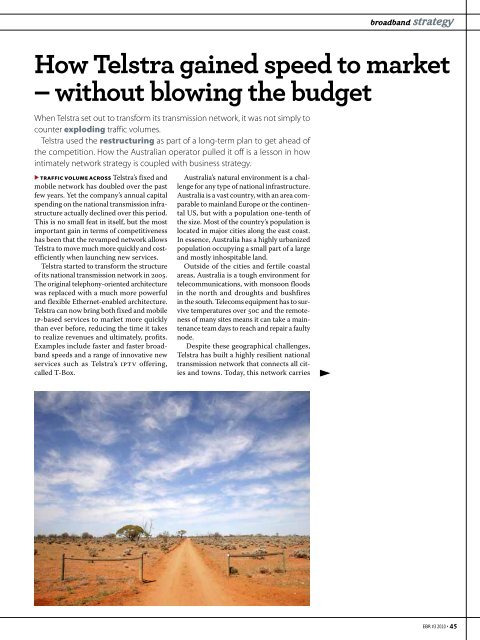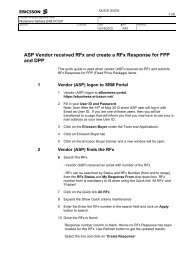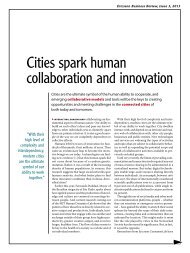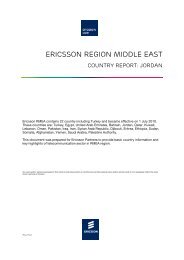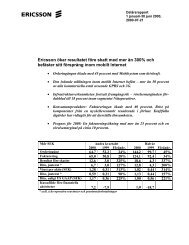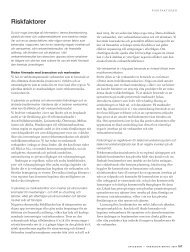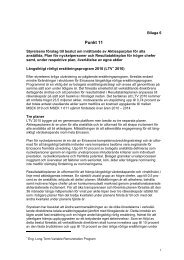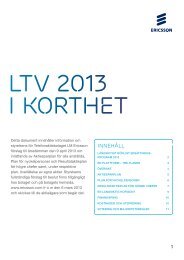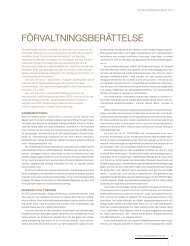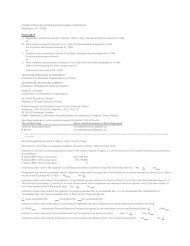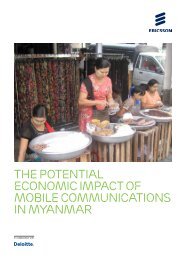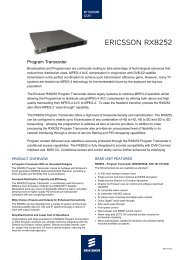Telenor's - Ericsson
Telenor's - Ericsson
Telenor's - Ericsson
- TAGS
- ericsson
- www.ericsson.com
Create successful ePaper yourself
Turn your PDF publications into a flip-book with our unique Google optimized e-Paper software.
How Telstra gained speed to market<br />
– without blowing the budget<br />
When Telstra set out to transform its transmission network, it was not simply to<br />
counter exploding traffic volumes.<br />
Telstra used the restructuring as part of a long-term plan to get ahead of<br />
the competition. How the Australian operator pulled it off is a lesson in how<br />
intimately network strategy is coupled with business strategy.<br />
▶ TRAFFIC VOLUME ACROSS Telstra’s fixed and<br />
mobile network has doubled over the past<br />
few years. Yet the company’s annual capital<br />
spending on the national transmission infrastructure<br />
actually declined over this period.<br />
This is no small feat in itself, but the most<br />
important gain in terms of competitiveness<br />
has been that the revamped network allows<br />
Telstra to move much more quickly and costefficiently<br />
when launching new services.<br />
Telstra started to transform the structure<br />
of its national transmission network in 2005.<br />
The original telephony-oriented architecture<br />
was replaced with a much more powerful<br />
and flexible Ethernet-enabled architecture.<br />
Telstra can now bring both fixed and mobile<br />
ip-based services to market more quickly<br />
than ever before, reducing the time it takes<br />
to realize revenues and ultimately, profits.<br />
Examples include faster and faster broadband<br />
speeds and a range of innovative new<br />
services such as Telstra’s iptv offering,<br />
called T-Box.<br />
Australia’s natural environment is a challenge<br />
for any type of national infrastructure.<br />
Australia is a vast country, with an area comparable<br />
to mainland Europe or the continental<br />
US, but with a population one-tenth of<br />
the size. Most of the country’s population is<br />
located in major cities along the east coast.<br />
In essence, Australia has a highly urbanized<br />
population occupying a small part of a large<br />
and mostly inhospitable land.<br />
Outside of the cities and fertile coastal<br />
areas, Australia is a tough environment for<br />
telecommunications, with monsoon floods<br />
in the north and droughts and bushfires<br />
in the south. Telecoms equipment has to survive<br />
temperatures over 50c and the remoteness<br />
of many sites means it can take a maintenance<br />
team days to reach and repair a faulty<br />
node.<br />
Despite these geographical challenges,<br />
Telstra has built a highly resilient national<br />
transmission network that connects all cities<br />
and towns. Today, this network carries<br />
broadband strategy<br />
EBR #3 2010 45


